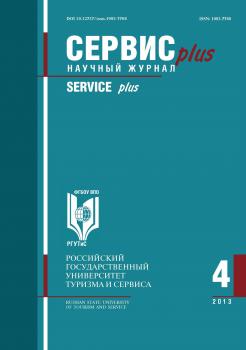St. Petersburg, Russian Federation
This study describes the practice of lulling in contemporary urban culture and its accompanying speech forms and nonverbal components. The research material included interviews with parents, which were recorded in Saint Petersburg from 2008 to 2015. Thirty-seven such records (33 women and 4 men) were made during the gender study. In was interesting to find out which texts the parents used as lullabies and what they felt when lulling their children to sleep and how the children reacted to it. It was found that various texts and melodies, which the respondents were sung in their childhood, were used as lullabies; these texts and melodies came from different genres and times, including contemporary works. The repertoire is generally based on the personal experience of the performer. Adults sing to their children the things that they themselves learned during their childhood, folk lullabies, which they are familiar with after reading children’s books, popular hits and military songs that they learned while attending the school choir. The choice to use this or that text as a lullaby can be related to the state of emotional comfort and calmness of the performer. Thus, the lullaby is addressed equally to both participants of the process – the child and the performer. Through certain strategies (rocking, humming), parents also access their own feelings and gain the ability to control them. It is worth noting that the textual content of the lullaby is not as important for the child as it is for the adult. Children’s needs primarily come from the rhythm and melody of the performed work. Therefore, it is possible to conclude that the lullaby is a means that allows working with the internal state of the per-former.
Lullabies, rocking, lulling, urban folklore, folklore of motherhood, children’s needs
1. Adon'eva S.B. Zvukovye formuly v ritual'nom fol'klore // Fol'klor i postfol'klor: struktura, tipologiya, semiotika. URL: http://www.ruthenia.ru/folklore/adonieva1.htm (data obrascheniya: 15.05. 2016).
2. Bern E. Igry, v kotorye igrayut lyudi. Psihologiya chelovecheskih vzaimootnosheniy. M.: Eksmo, 2016. 352 s.
3. Burd'e P. Prakticheskiy smysl / obsch. red. i posleslov. N.A. Shmatko. SPb.: Aleteyya; M.: In-t eksperimental'noy sociologii, 2001. 562 s.
4. Vetuhov A. Narodnye kolybel'nye pesni // Etnograficheskoe obozrenie. 1892. Kn. 12. S. 131-154.
5. Golovin V.V. Kolybel'nye pesni i priemy ubayukivaniya na Russkom severe // «Mir detstva» v tradicionnoy kul'ture narodov SSSR. L., 1991. Ch. 2. S. 91-100.
6. Golovin V.V. Russkaya kolybel'naya pesnya v fol'klore i literature. Turku: Abo Academi Univversity Press, 2000. 445 s.
7. Golovin V.V. Ubayukivaniya Klavdii Fominichny Petrovoy // Zhivaya starina. 1999. № 1. S. 16-18.
8. Zarnicyna I. Kolybel'naya // Proza.ru. 2011. URL: https://www.proza.ru/2011/12/01/1709 (data obrascheniya: ob-rascheniya: 15.05. 2016).
9. Ivanov A.N. Prichitaniya nad kolybel'yu, zapisannye v yuzhnoy Rossii // Zhivaya starina. 1994. № 4. S. 40-43.
10. Kapica O.I. Detskiy fol'klor. Pesni, poteshki, draznilki, skazki, igry. Izuchenie. Sobiranie. Obzor materiala. L.: Priboy, 1928. 222 s.
11. Koropnichenko A. K voprosu o zhanrovoy atribucii kolybel'nyh napevov // Tradicionnoe iskusstvo i chelovek: tez. XIX nauch. konf. molodyh fol'kloristov pamyati A.A. Gorkovenko. SPb.: Belyy gorod, 1997. S. 34-39.
12. Lefransua Gi. Teorii naucheniya. Formirovanie povedeniya cheloveka. SPb.: Praym-Evroznak, 2003. 287 s.
13. Litvin E.S. Pesennye zhanry russkogo detskogo fol'klora // Sovetskaya etnografiya. 1972. № 1. S. 58-67.
14. Martynova A.N. Opyt klassifikacii russkih kolybel'nyh pesen // Sovetskaya etnografiya. 1974. № 4. S. 101-116.
15. Mel'nikov M.N. Russkiy detskiy fol'klor Sibiri. Novosibirsk: Zapadno-Sibirskoe knizhn. izd., 1970. 218 s.
16. Muratova M.O. Ispanskie kolybel'nye pesni. SPb., 1998. Fol'klornyy arhiv kabineta fol'klora SPbGU. Rukopis'.
17. Raykova I.N. «Lozhechku za papu...» (Detstvo i detskiy fol'klor glazami sovremennyh studentov) // Tradicionnaya kul'tura. 2008. № 4 (32). S. 108-117.

















